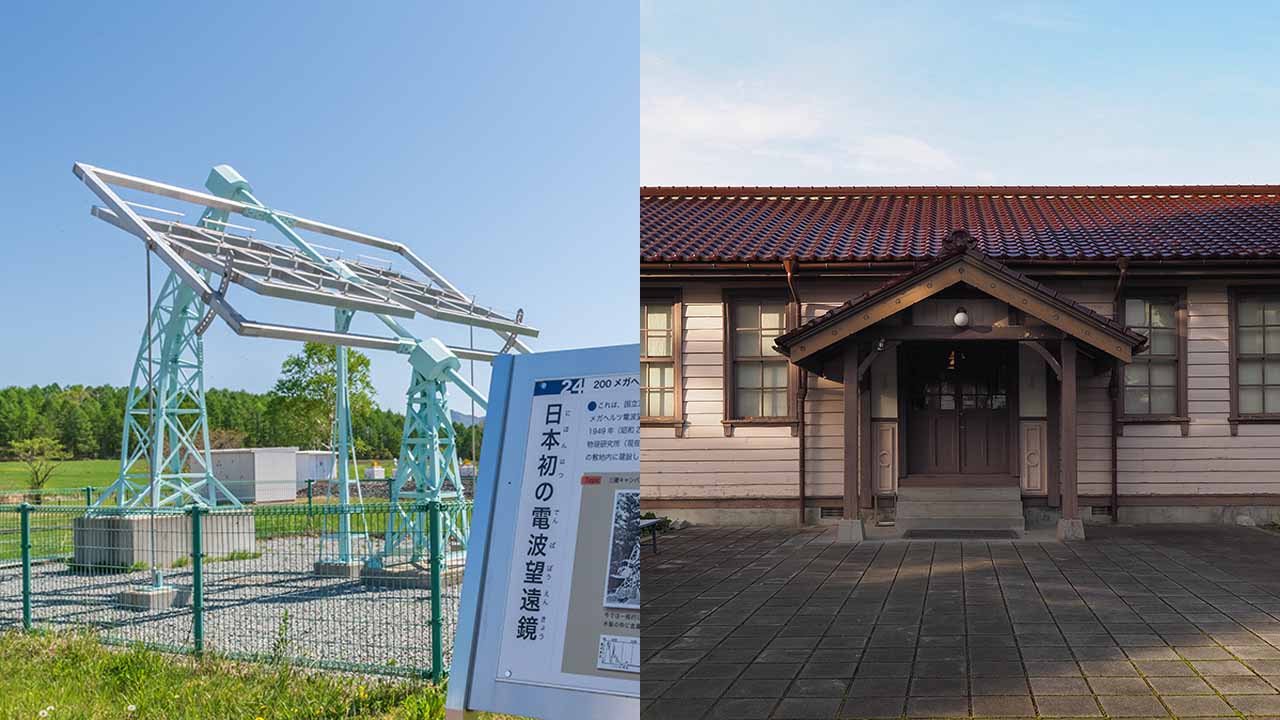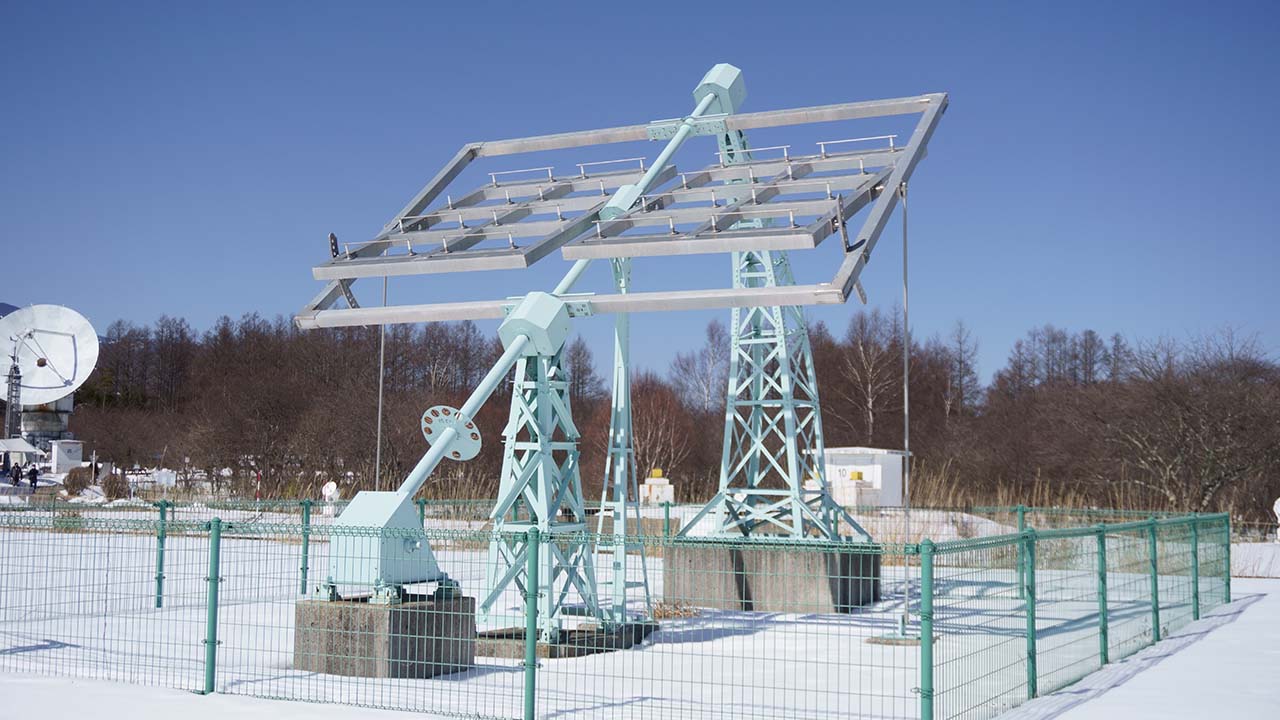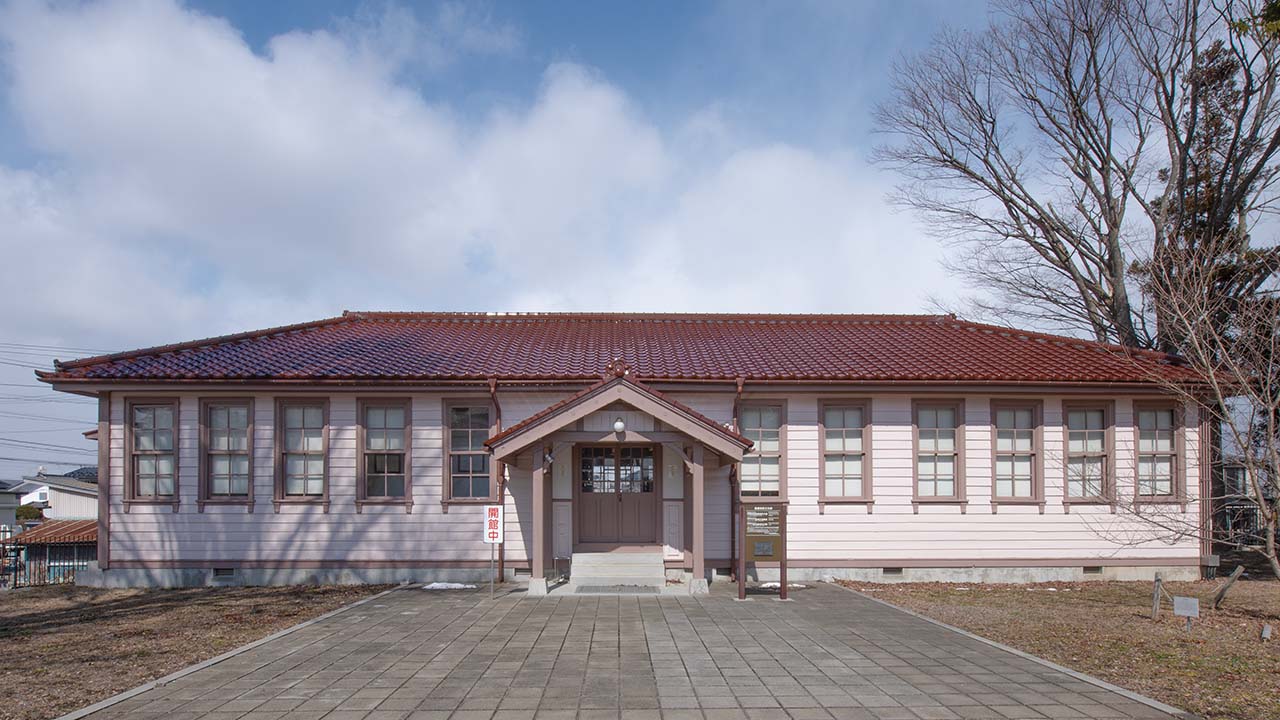200 MHz Solar Radio Telescope and Main Building of Temporary International Latitude Observatory Recognized as Japan Astronomical Heritage
| Topics

Two NAOJ facilities have been recognized in the 7th (FY 2024) “Japan Astronomical Heritage” list. They are the “Mitaka 200 MHz Solar Radio Telescope” at Nobeyama Radio Observatory and the “Temporary International Latitude Observatory Main Building (Kimura Hisashi Memorial Museum)” at Mizusawa VLBI Observatory.
Mitaka 200 MHz Solar Radio Telescope
This was one of the first solar radio telescopes in Japan, built in 1949 at the Tokyo Astronomical Observatory of the University of Tokyo (now NAOJ Mitaka Campus). The antenna was about 3 meters long and 5 meters wide, made of metal rods fixed to a wooden frame, and the mount was a part of the equatorial mount that had been used to observe the solar eclipse of 1936, but it lacked a drive so seems to have been moved by hand to track the diurnal motion of heavenly bodies. Despite the difficulty of procuring the necessary materials for construction in the immediate postwar period, this early radio telescope was completed thanks to the cooperation of the Radio Physics Laboratory of the Ministry of Education (the predecessor of today’s National Institute of Information and Communications Technology), and with a great deal of ingenuity, it successfully received solar radio signals. This telescope marked the beginning of radio astronomy in Japan.
Over the years, the wooden frame of this monumental radio telescope decayed, leaving only a few metal parts, such as the shaft of the mount, and a few other parts. Little by little, the remaining pieces were refurbished and missing pieces were replaced, and in August 2007, Japan’s first radio telescope was restored to its former glory at Nobeyama. The telescope, including parts that could not be used during the restoration due to deterioration, which is the only one of the early radio telescopes that was not discarded, was recognized as Japan Astronomical Heritage as valuable historical material that tells of the dawn of radio astronomy in Japan. The restored radio telescope can be viewed at Nobeyama Campus.

Temporary International Latitude Observatory Main Building (Kimura Hisashi Memorial Museum)
Established in 1899, the Temporary International Latitude Observatory in Mizusawa (present-day Oshu City, Iwate Prefecture) was one of six observatories around the world established at 39°8’ north latitude for the International Latitude Service. The building that has been recognized as Japan Astronomical Heritage was completed in 1900 as the main building of the Temporary International Latitude Observatory. The Temporary International Latitude Observatory was later renamed the International Latitude Observatory in 1920, and transitioned to one of the observatories of NAOJ in 1988, but this building was used as a laboratory until 1966, when the current main building of Mizusawa VLBI Observatory was constructed.
When the current main building was constructed, the building at this location was relocated to the north side of Mizusawa Campus and reborn as the “Kimura Museum” that reproduced the office of the first director, Kimura Hisashi (Note 1). It was opened extensively to the public. During renovations in 2008, the exterior walls were restored to the same color as when it was built. In 2011, the building was renamed the “Kimura Hisashi Memorial Museum” in order to better publicize the achievements of Kimura Hisashi. The Kimura Hisashi Memorial Museum not only reproduces the director’s office, but also exhibits the instruments used by Kimura in his observations, such as the first visual zenith telescope (Note 2), the floating zenith telescope, and the Omori seismograph, which show the development of astronomy and earth sciences in Japan. The building and instruments are both well preserved and have contributed to the popularization of astronomy, and thus the building was recognized as a Japan Astronomical Heritage site. The building is also designated as a Registered Tangible Cultural Property.
- (Note 1) He served as the first director of the Temporary International Latitude Observatory and the International Latitude Observatory. He is known for his discovery of a new element (the Z term) added to the formula used to measure changes in the Earth’s polar motion.
- (Note 2) The Temporary Latitude Observatory visual zenith telescope and related buildings are recognized in the 3rd (FY2020) Japan Astronomical Heritage list (Japanese language site).

Japan Astronomical Heritage is recognized by the Astronomical Society of Japan for the purpose of carefully preserving historically valuable astronomy and calendar-related heritage, passing it on to the next generation as a cultural heritage, and promoting its utilization. The objects under the jurisdiction of NAOJ that have been recognized as Japan Astronomical Heritage so far include the 6-m Millimeter-Wave Radio Telescope at Mitaka Campus (the 2nd list, FY 2019), the visual zenith telescope and related buildings at the Temporary International Latitude Observatory at Mizusawa Campus (the 3rd list, FY 2020), the Repsold Transit Instrument and the Repsold Transit Instrument Building at Mitaka Campus (the 6th list, FY 2023).